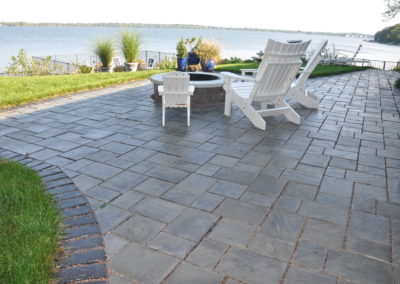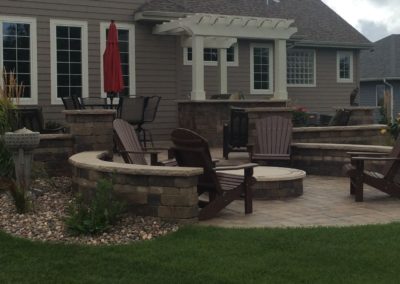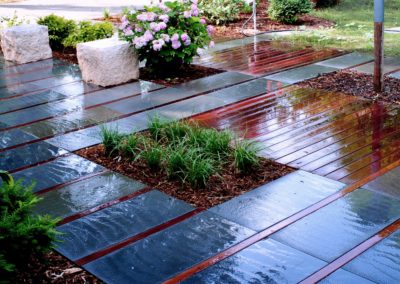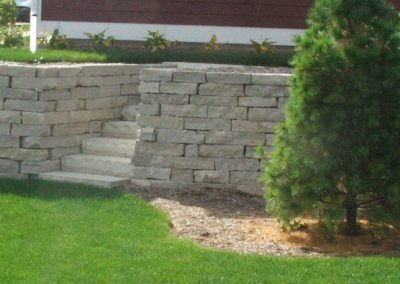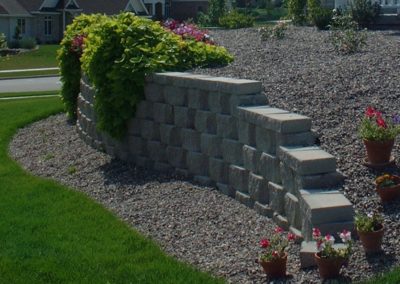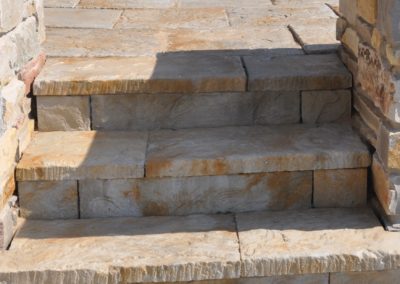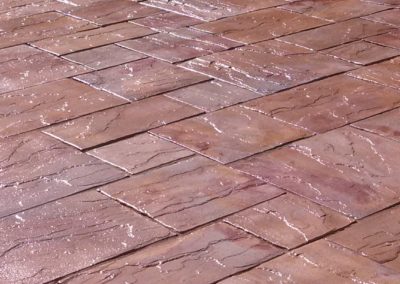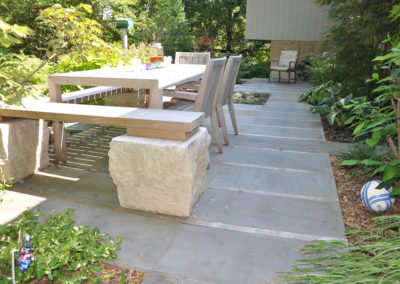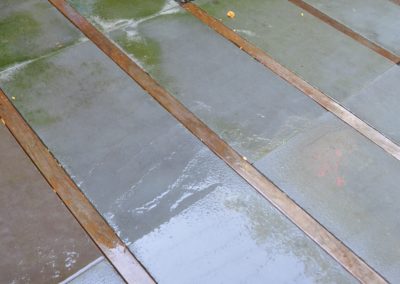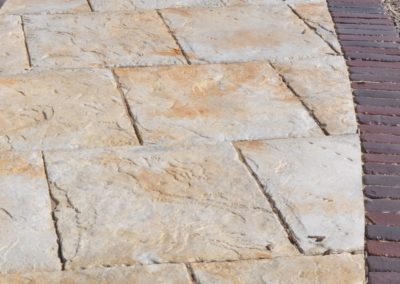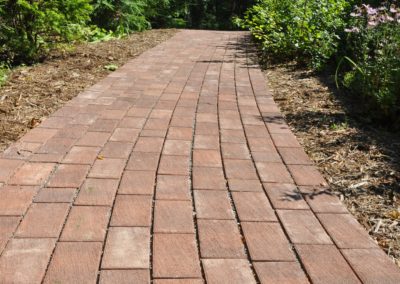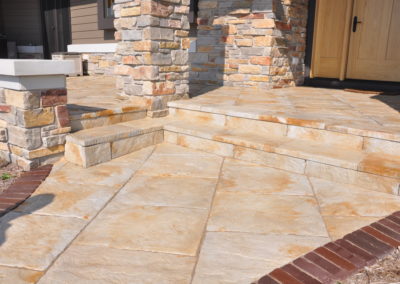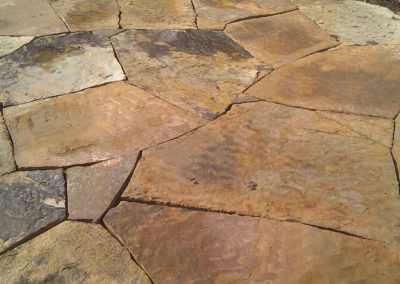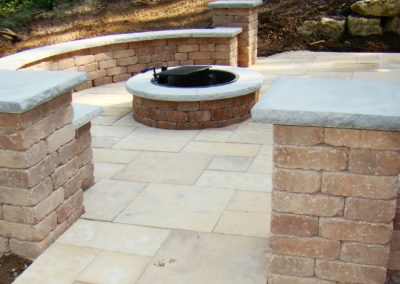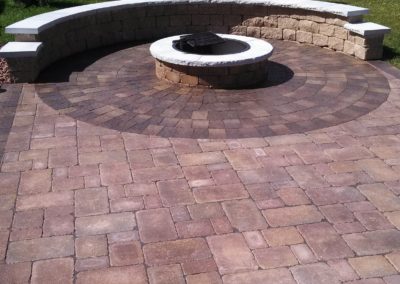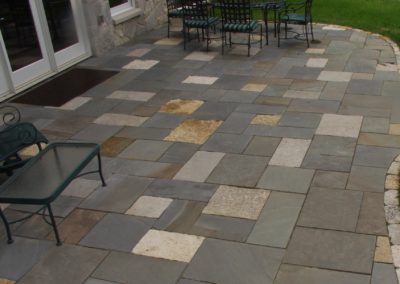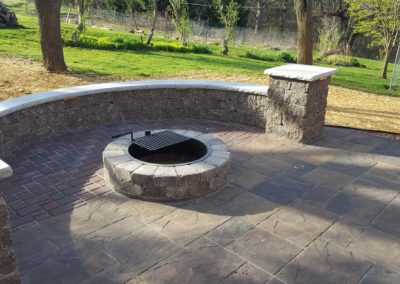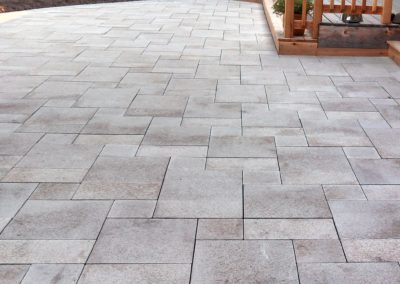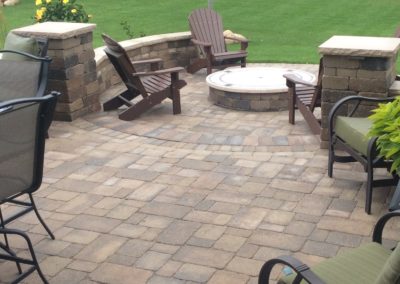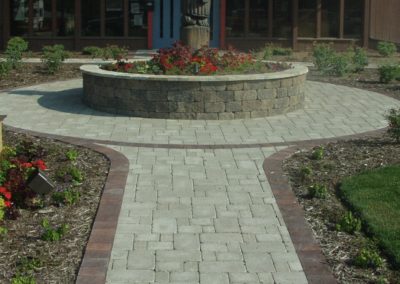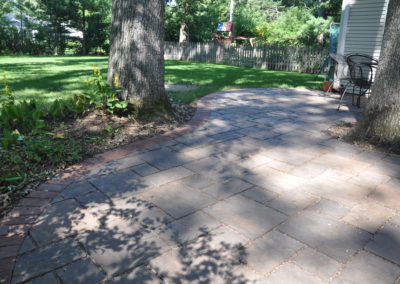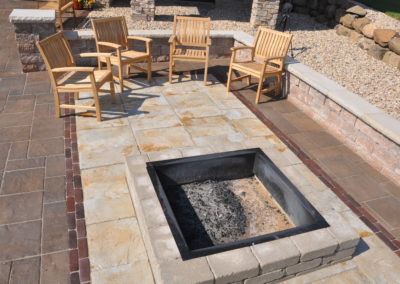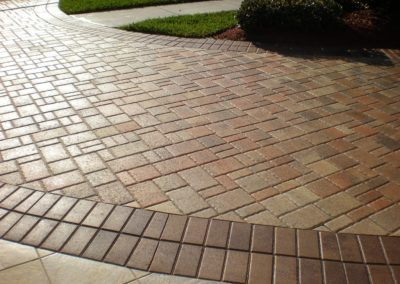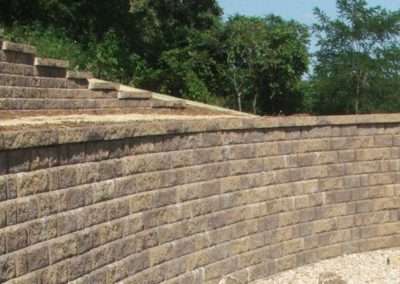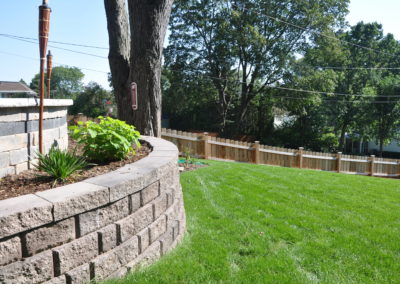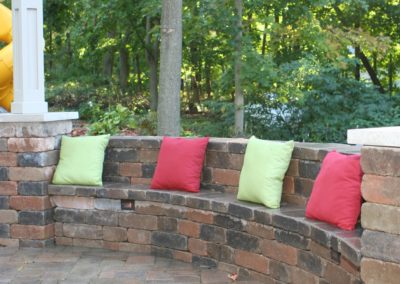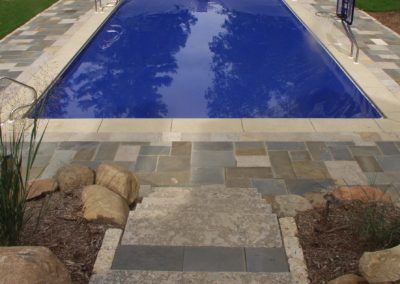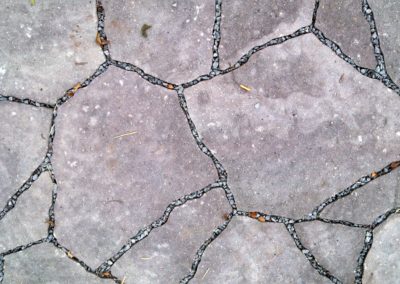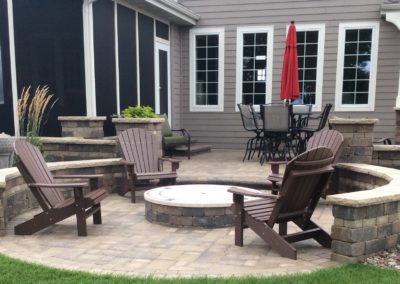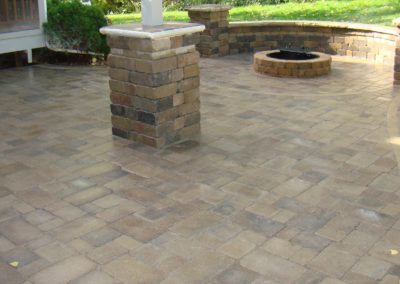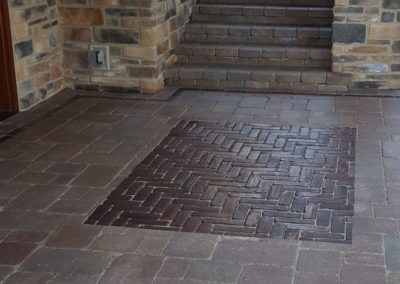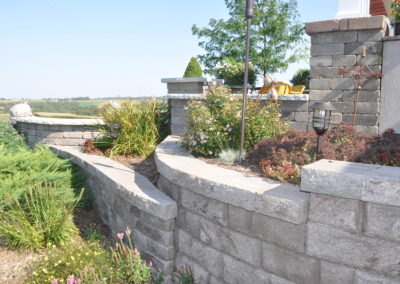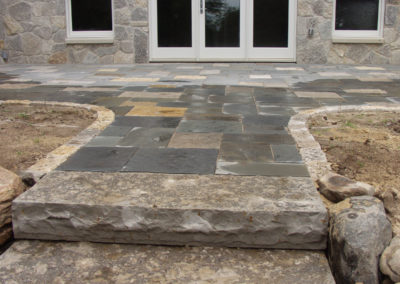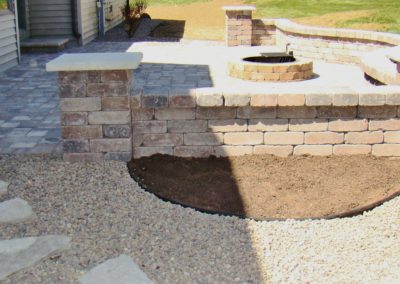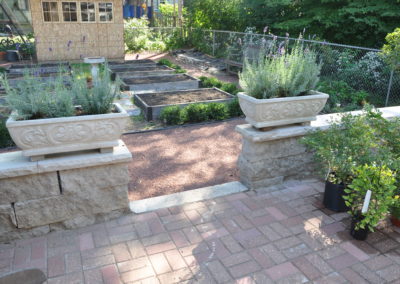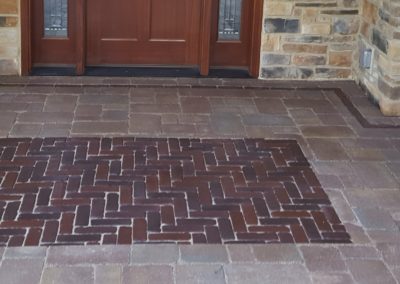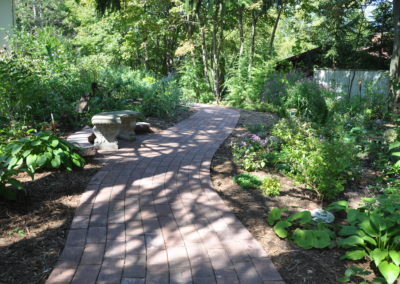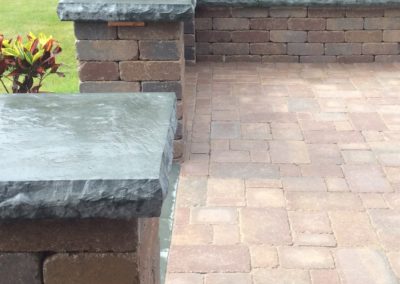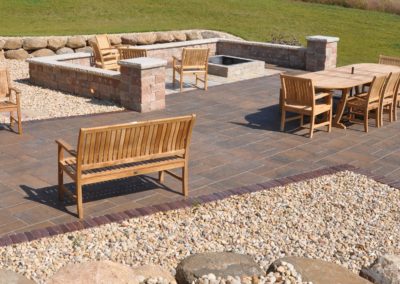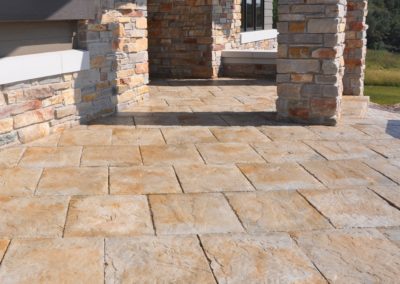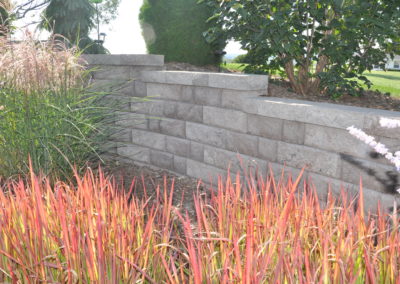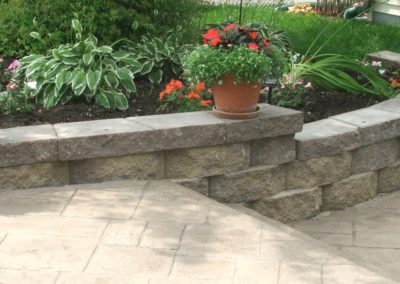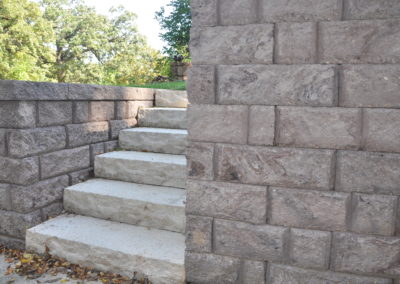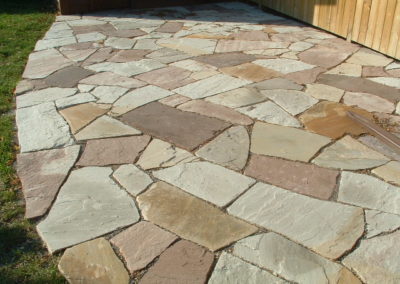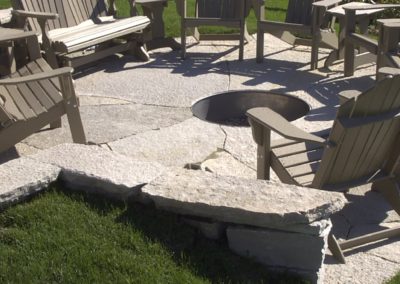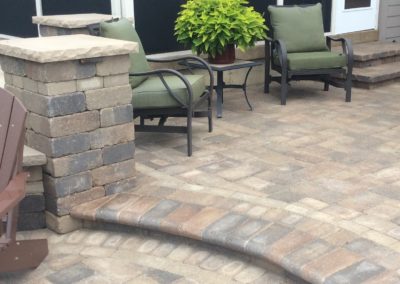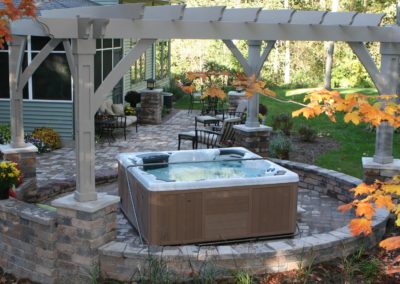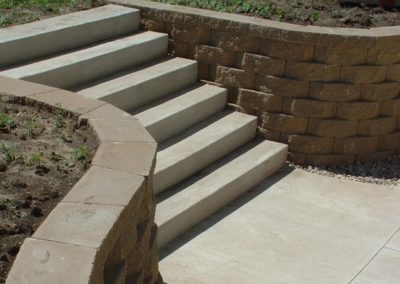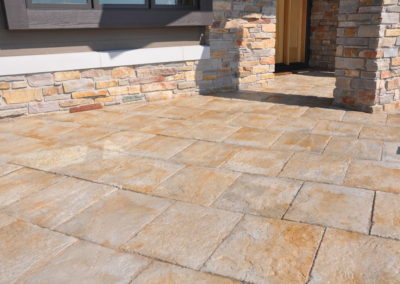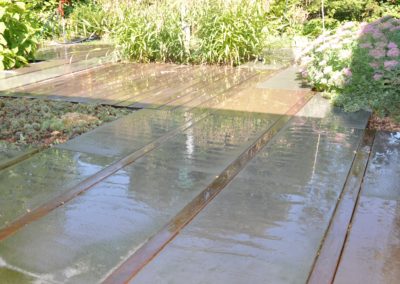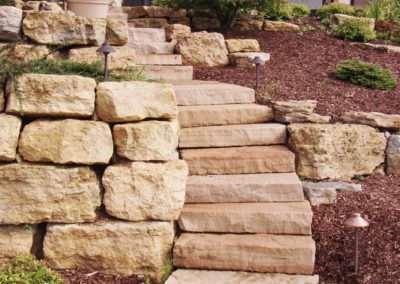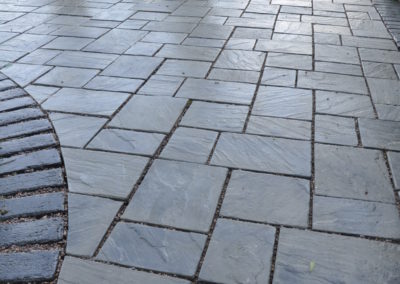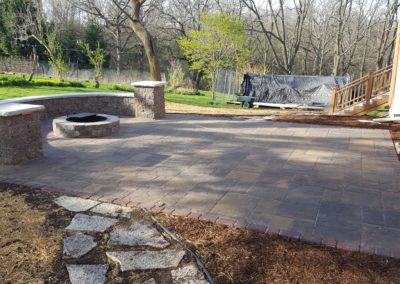Brick, Block & Natural Stone
Stone Landscaping provides a solid base to any home landscape design or commercial landscaping project. Landscaping with rocks or adding a patio or seating wall to a landscape are just a few ways to impact the look of your lawn and garden.
Stone Landscaping includes landscaping with rocks, patios, retaining walls, walkways and water features. Water features include ponds, waterfalls, water diversion and underground water storage.
Adding a stone landscaping to your project can extend a current living space into the outdoors, help with traffic flow around your home or business, or create a new “room” for your home including a kitchen and fireplace for outdoor entertaining.
With years of expertise in stone landscaping, you can see our work throughout the greater Madison, Wisconsin area.
To learn more about how stone landscaping can change the look of your garden or landscaping design, choose one of the links to the left.
A landscape retaining wall is designed to hold back soil or rock from a building or area. Landscape retaining walls can be made from several different types of materials, and in their early days were made from railroad ties or large stones. There are a variety of materials available today for landscape retaining walls, including pre-formed blocks.
Landscape retaining walls often include landscaping such as plantings, flowers or other material to add to the look of the wall. The additional landscaping can be tiered to break up the look of the wall and soften the appearance. Landscaped retaining walls can be used to address water erosion problems in addition to adding beauty to a landscape.
- Block walls provide the most formal look in a retaining wall. They are useful for front gardens, creating grade changes, and can be engineered to hold back a large amount of hill. The lack of gaps between the blocks minimizes wash through and rodents.
- Granite boulders are usually rounder, and come in an array of color tones including gray, cream, red and blue. These walls provide a location for landscaping with trailing plants, which can further soften the wall’s appearance.
- Limestone walls are a great way to give a more formal appearance without using a pre-made concrete product. Limestone is found throughout the Southern Wisconsin area, and is the natural choice to reflect the surrounding topography of your home.
- Seating walls can be incorporated into almost any landscape idea. They can be placed around a patio, along the bottom of a grade, or provide a planting area around a tree.
Patios and walkways are added to landscape to extend living areas, as well as to direct traffic flow around a home or business. Patios can extend a current living space or create a new space outside your home. Brick or paver walkways create an inviting entrance to your patio or other outdoor living space, can replace cracked cement walkways, and direct guests around your home.
A variety of paving materials are available to create exactly the look and feel that you may want for your home. The only limitations are based on the space available, the shape of the paved area and the amount you would wish to spend.
Natural stone products provide a surface with a less uniform surface which feels more natural in the landscape. They require a more specialized foundation, but when installed correctly, will last as long as a manufactured product.
Bricks and concrete pavers are the traditional choice for most patios, and come in a large range of looks and colors. Unlike the products found at home improvement stores, Kittleson Landscape patio builders use guaranteed products so you know you are making a good investment. We also use special filler sand and sealers to minimize the growth of weeds in cracks.
Get your project done right and let Kittleson’s patio builders and landscaping architects help you design the outdoor patio living space that you have always wanted.
Adding a water feature to your landscape adds a serene and tranquil dimension only found through the sound of water. Water features include ponds, waterfalls, fountains or rain gardens.
Our landscape architects can design your water landscape project to include a variety of plants, and, in the case of ponds, designed to house fish. They are often designed with rock and stone and are most often integrated into a larger landscape plan.
Rain gardens are popular choices when dealing with water runoff. Rain gardens allow rainwater runoff from areas like roofs, driveways and walkways the opportunity to be absorbed into the ground and returned to the earth’s natural water supply. Adding rain gardens can reduce the amount of pollution that reaches water bodies (lakes, creeks and streams).
Although they don’t hold water on a regular basis, water diversion channels (also known as dry river beds) are an attractive way to run water around the foundation of the house and reducing erosion of the soil. These channels can be planted or can be left natural with only stone.
In addition to using landscape water features for conservation, rainwater harvesting is becoming a popular option for homeowners. Rainwater harvesting is a method of capturing rainwater for storage in underground tanks to be available for later use for watering plants or other outdoor water use. For more detailed information about water conservation and rainwater harvesting, visit our water conservation page.

